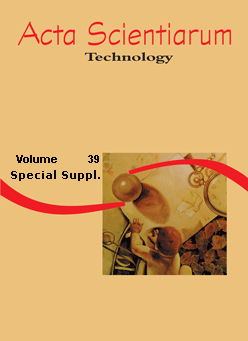<b>Analysis and design of reinforced concrete deep beams using the stress fields method
Abstract
Bernoulli's hypothesis facilitates the understanding of some structural elements. However, this hypothesis cannot be applied for some special regions, denominated ‘D regions’ or ‘Discontinuity regions’. Deep beams are usually classified into this category and, for this reason, the Brazilian structural code (Associação Brasileira de Normas Técnicas [ABNT], 2014) proposes the design of these elements using Strut-and-Tie Method (STM), which is based on forces acting in hypothetical truss models. Different from the Strut-and-Tie Method (STM), the Stress Field Method (SFM) is based on the knowledge of the stresses acting inside of a structure. Both methods have the same purpose, identify the load carrying mechanisms inside of a complex region. In order to evaluate the potential of the so-mentioned methods, the Jconc software package, which is based on the Non-Linear Elastic-Plastic Stress Fields (NL-EPSF), was applied for the design and analysis of some deep beams. Based on some validations and comparisons, it was possible to propose a solution based on the SFM for the analysis, design, and detailing of deep beams. Finally, the parameters established by the ABNT (2014) for the deep beams were evaluated based on the simulations.
Downloads
DECLARATION OF ORIGINALITY AND COPYRIGHTS
I Declare that current article is original and has not been submitted for publication, in part or in whole, to any other national or international journal.
The copyrights belong exclusively to the authors. Published content is licensed under Creative Commons Attribution 3.0 (CC BY 3.0) guidelines, which allows sharing (copy and distribution of the material in any medium or format) and adaptation (remix, transform, and build upon the material) for any purpose, even commercially, under the terms of attribution.
Read this link for further information on how to use CC BY 3.0 properly.





















